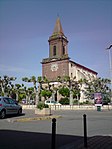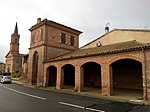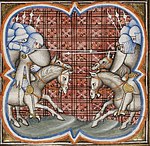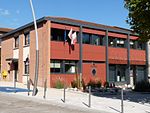Midi-Pyrénées

Midi-Pyrénées (French pronunciation: [midi piʁene] (listen); Occitan: Miègjorn-Pirenèus [mjɛdˈdʒuɾ piɾeˈnɛws] or Mieidia-Pirenèus [mjejˈdi.ɔ piɾeˈnɛws]; Spanish: Mediodía-Pirineos) is a former administrative region of France. Since 1 January 2016, it has been part of the new region of Occitania. It was the largest region of Metropolitan France by area, larger than the Netherlands or Denmark. Midi-Pyrénées has no historical or geographical unity. It is one of the regions of France created in the late 20th century to serve as a hinterland and zone of influence for its capital, Toulouse, one of a handful of so-called "balancing metropolises" (métropoles d'équilibre). Another example of this is the region of Rhône-Alpes which was created as the region for Lyon.
Excerpt from the Wikipedia article Midi-Pyrénées (License: CC BY-SA 3.0, Authors, Images).Midi-Pyrénées
Chemin de la Saudrune, Muret
Geographical coordinates (GPS) Address Nearby Places Show on map
Geographical coordinates (GPS)
| Latitude | Longitude |
|---|---|
| N 43.5 ° | E 1.3333333333333 ° |
Address
Chemin de la Saudrune
Chemin de la Saudrune
31120 Muret
Occitania, France
Open on Google Maps










